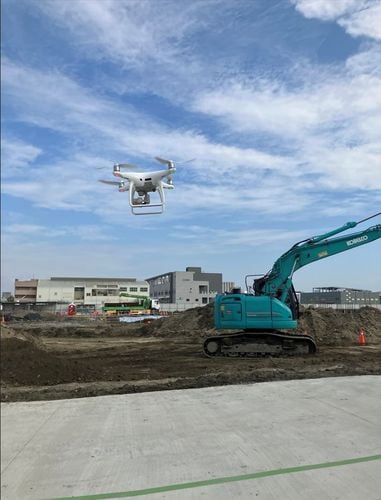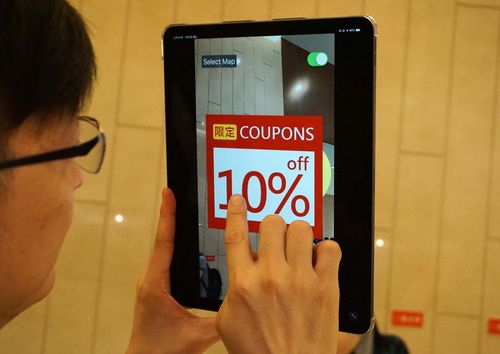【2021 Solutions】 Yirui Technology, the best helper for Taiwan’s industry to protect the country’s sacred mountains, allows customers to use it whenever they choose.
There is no doubt that AI helps factories become more automated. However, the typical AI project takes up to 3 months. Is there a solution that can quickly deploy AI technology to improve defect accuracy? The answer is: yes.
Customers include AUO, Chimei, TSMC, MediaTek, Macronix and other major electronics manufacturers. Yirui Technology, which can be called the best helper of Taiwan’s “Sacred Mountains that protect the country”, has launched “AI service modularization”. Modularizing various AI technologies, just like an ordering machine, allows customers to select whatever they need, which can help customers quickly deploy AI and achieve the goal of improving the speed and accuracy of AI projects.
Yirui Technology, established in 2004, started out by selling the anti-virus software Bakarski. It is a professional information security and security company. In 2015, it entered the AI field and developed the AI Vision intelligent image recognition system. After 2018, it focused on We have accumulated considerable experience in smart image recognition applications at the factory, including license plate recognition, tank truck recognition, personnel and equipment inspection, smart logistics, smart operating machines, and smart unmanned factories. Our customers include AUO, Chimei, and TSMC. , MediaTek, Macronix, Formosa Plastics, Asia Cement, Far East New Century and other leading companies.

▲Various AI applications in Yirui Technology Smart Factory
Yirui Technology’s professional technology has won the favor of international manufacturers
"Every case of Yirui is not easy, that is because the experience of cooperation with large manufacturers makes our technology more powerful," Zhou Shihan, deputy general manager of Yirui Technology, said with confidence. As far as Chimei Industrial is concerned, , the accuracy of defect detection is required to be as high as 99.5% or more. Since Yirui Technology established its AI department in 2018, it has successively served dozens of factories. Many customers hope to go online quickly and transfer the AI technology part back to the company so that internal employees can smoothly connect.
In response to this trend, Yirui Technology has launched two services. One is a complete AI product CIC camera accuracy detection system to help customers detect camera abnormalities (including disconnection, black screen, camera shift, occlusion, etc.) (such as abnormal screen conditions), an alarm can be issued as soon as possible. Another launch is the modularization of AI services. The CIC camera availability detection system can assist the factory in monitoring thousands of cameras at a time. In the past, employees in charge of monitor-related matters in the factory would regularly check the camera images manually with the naked eye. This was not only time-consuming, but also often caused by The person in charge wears multiple hats, and the work of checking the monitor is not fully performed. The greatest value of AI is to replace human labor to perform such simple and repetitive tasks. Only one CIC host is needed, placed on the intranet, and the cycle can be set to check the health and proper status of the camera, and reports will be automatically generated for relevant personnel to check, greatly improving work efficiency!
Another concept of service AI service modularization is to turn the AI technology package into software, and the online execution of an AI solution that can be applied on the ground will usually be summarized into several stages:
1. Confirmation of customer needs; 2. Collection of training data; 3. Pre-processing of training data; 4. Data delivery for training; 5. Algorithm writing; 6. User interface writing; 7. Database concatenation; 8. Additional information will be provided later.
Taking these eight stages as an example, except that the algorithm writing engineer needs a long period of training, the rest can be done by the company itself or handed over to Yirui for execution. Simple basic modules include license plate recognition, industrial safety equipment, etc., and are made into standardized modules. As for tank trucks, processes, or the names of chemicals on tank trucks, complete modules can be planned according to customer needs. , the customer purchases the "menu" by themselves. If the client wants to go online on its own, Yirui Technology can complete the online version within a month, speeding up the customer's AI deployment process.

▲Yirui Technology’s A.I.VISION smart image analysis system is favored by major international manufacturers
Yirui Technology currently has 32 employees, including nearly 20 AI engineers. Unlike AI manufacturers on the market who can only make simple AI visual recognition, Yirui Technology has a large amount of past training materials, rich project introduction experience, and various identification methods. It is 100% made in Taiwan and provides local services. Generally, the recognition rate is higher and more accurate. At the same time, availability is higher as customers’ demand elastically adjusts.
Traditional optical inspection has a high false positive rate. AI+AOI greatly improves yield and production line efficiency
For Yirui Technology, AI+AOI is also one of the modules. Yirui engineers only need to provide a little training data, and they can achieve an accuracy of 80% in about a month, helping enterprises to use AI when it goes online. The distance becomes very short.
In addition to the existing manufacturing plants, Yirui Technology has also entered the field of optics and cooperated with Xiaoma Optics to jointly develop advanced physical optical measurement methods and optical module design. At present, most manufacturers will introduce AOI systems for production line defect inspection, but most of them use OCR (optical character recognition, which refers to the process of analyzing and recognizing image files of text data to obtain text and layout information) technology, which needs to be 100% The accuracy leaves no room for error, leading to accidental killings that often occur. This time, Yirui Technology and Xiaoma Optics cooperated to install Yirui's AI system in the optical inspection instruments developed by Xiaoma Optics, adding AI algorithms to the optical detection of defects, and training AI model identification based on the data and needs provided by customers. For the determination of defects, the accuracy of determination can be greatly improved, the yield rate can be improved, and the efficiency of the production line can be increased.

"As for AI+AOI technology in the optical field, for Yirui, the environmental complexity factors of optical inspection are relatively low. As long as the customer defines the defect clearly, the more accurate and detailed the information provided, the better the defect detection and identification. The rate can often reach more than 98%, and the operation time can also be shortened relatively." Zhou Shihan went on to say that for Yi Rui, the two most difficult parts are that the company's current manpower cannot take on too many AI projects at one time, mainly due to the self-requirements of engineers. High, every project needs to be carefully crafted; the second part is that large customers usually take a long time to consider their purchases. This is why Yirui Technology changed the business model of AI projects to AI service modules and project information consultants. Based on customer needs, we can sell modules or semi-finished products and quickly close the case to maintain the company's normal operations.
In addition to the Taiwan market, Yirui Technology has also extended its reach to the international market. There are currently several projects underway in Thailand, one of which is the Royal Rama Hospital in Thailand. Yirui is responsible for facial recognition and behavior of patients in the hospital. Monitoring to prevent patients from falling, etc. Another interesting case is the classification and identification of salvaged items from river garbage ships in Thailand, and the AI identification project of a major auto parts manufacturer. Yirui Technology's AI image recognition technology has gradually been recognized and accepted by overseas markets.
Looking forward to the future, Yirui Technology hopes to expand its experience in AI visual recognition technology from 2D to 3D, and even extend it to audio and video recognition technical services, making Yirui Technology a comprehensive AI professional services company.
「Translated content is generated by ChatGPT and is for reference only. Translation date:2024-05-19」


